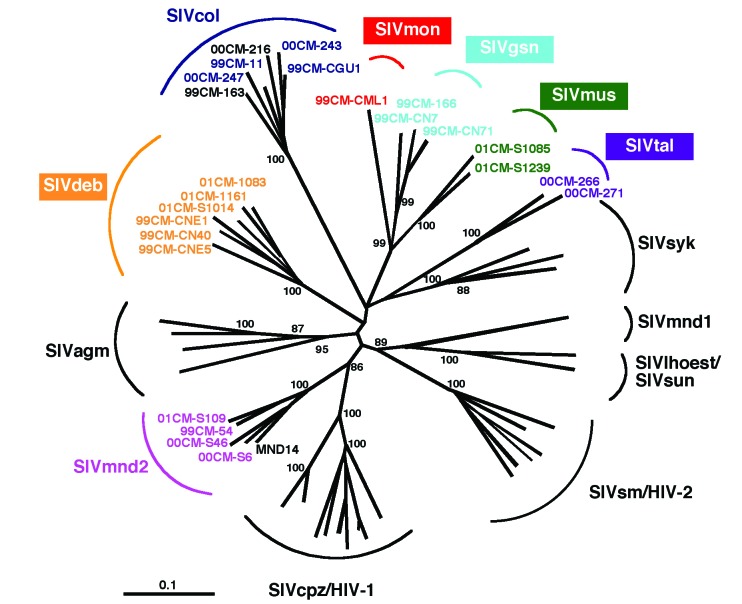Figure 2.
Identification of diverse Simian immunodeficiency virus (SIV) lineages in primate bushmeat. A 650-bp pol fragment was amplified from monkeys representing seven primate species, sequenced, and subjected to phylogenetic tree analysis by the neighbor-joining method. The positions of 21 SIV sequences from the present study (in color) are shown in relation to HIV/SIV reference sequences from the Los Alamos HIV/SIV Sequence Database (in black). The consensus length of the final alignment used for tree construction was 555 bp. The new species-specific SIV lineages are generally identified by a lower-case three-letter code corresponding to the initial letters of the common species name (e.g., SIVgsn for greater spot-nosed monkeys [Cercopithecus nictitans], SIVmus for mustached guenons [C. cephus] and SIVmon for mona monkeys [C. mona]). Lineages are defined as clusters of viral sequences from the same primate species that group together with significant (>80%) bootstrap values. We maintained the lineage designation of SIVtal previously assigned to a virus thought to be derived from a zoo animal of the species Miopithecus talapoin (28) since that sequence, and the two newly derived talapoin viruses from M. ogouensis, cluster together in a phylogenetic tree derived from additional pol nucleotide sequences (not shown). Branch lengths are drawn to scale (the bar indicates 10% divergence). The numbers at the nodes indicate the percent bootstrap values supporting the cluster to the right (only values >80% are shown).

